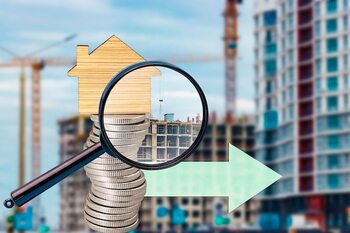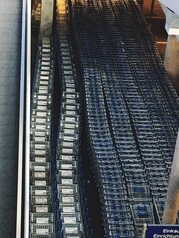The value of mobility in urban and rural real estate investment

The value of mobility in urban and rural real estate investment is a crucial aspect that many investors overlook. The dynamics between the urban and rural environment not only affect the appreciation of properties but also the quality of life of their inhabitants. In this article, we will explore how accessibility and transportation influence purchasing decisions, highlighting that a good location can be the determining factor to maximize your real estate investment.
The importance of connectivity in urban areas
Connectivity in urban areas is an essential factor in determining property values and the quality of life for residents. In a world where time is increasingly valuable, ease of access to essential services such as public transport, schools, hospitals, and shopping centers becomes a fundamental attraction for potential buyers and tenants. Cities that offer an efficient transportation network not only enhance daily mobility but also foster a more dynamic and sustainable environment, where people can interact and access opportunities without the limitations imposed by long distances or excessive travel times.
Moreover, good urban connectivity can significantly influence the appreciation of a property over time. Investments in road or rail infrastructure tend to increase interest in certain areas, making previously marginalized properties attractive options. This creates a positive cycle where improved accessibility not only attracts new residents but also elevates the profile of the area, thus benefiting real estate investors. Therefore, considering connectivity as one of the fundamental pillars when evaluating a real estate investment is crucial to maximizing its profitability and ensuring greater satisfaction among its occupants.
2. Access to services and its impact on rural property value
Access to essential services such as public transport, hospitals, schools, and shops has a significant impact on the value of rural property. As more people seek a lifestyle that combines tranquility and nature with urban convenience, properties located near these services tend to appreciate in value more rapidly. A well-connected rural area not only attracts families looking to escape the hustle and bustle of the city but also investors who recognize the potential for appreciation. Proximity to a main road or a train station can make a property much more attractive to buyers, thus increasing its demand.
Additionally, the development of infrastructure is a key factor in the valuation of rural properties. Projects such as new access routes or expansions in public transport can transform areas previously considered remote into desirable places to live and invest. For example, if the construction of a new bus line connecting a rural area with major urban centers is planned, it is likely that this will boost both interest in local housing and its price. In this sense, investors should pay attention to urban projections and the expected growth in these areas to make informed decisions about their real estate investments.
3. Price comparison: Is it more profitable to invest in rural areas?
The price comparison between investments in urban and rural areas reveals significant differences that can influence long-term profitability. In general, properties in rural areas tend to have a lower acquisition price, which can make them attractive to investors looking to maximize their initial capital. However, it is essential to consider not only the purchase cost but also factors such as appreciation potential and market demand. In some rural regions, the development of infrastructure and services can quickly increase property values, making them a profitable option in the medium and long term.
On the other hand, while urban investments often offer a more immediate return due to constant housing and commercial demand, high prices can limit access to new opportunities. Mobility plays a crucial role here; areas well connected by public transport or accessible by road tend to experience greater appreciation. Thus, investing in well-located rural areas or those in development can be more beneficial if local market projections are adequately analyzed. Ultimately, the key lies in finding a balance between acquisition price and future potential, always considering how mobility impacts each decision.
4. How public transportation redefines real estate opportunities
Public transportation plays a fundamental role in shaping real estate opportunities, as it directly influences the connectivity and accessibility of an area. Areas well-served by efficient transportation systems often experience higher demand, resulting in an increase in property values. Savvy investors recognize that investing in locations near subway stations, bus stops, or trams can offer a considerable long-term return. In this way, public transportation not only facilitates the mobility of residents but also acts as a catalyst for economic and urban development.
Moreover, the expansion of public transportation can transform underdeveloped communities into attractive hubs for new residents and businesses. When new lines are implemented or existing infrastructure is improved, nearby properties often see significant increases in their value. This phenomenon is especially notable in rural areas that have historically been disconnected; by offering better mobility options, opportunities are created to attract buyers and renters interested in enjoying a more accessible lifestyle without sacrificing the tranquility of the rural environment. Therefore, considering the potential of public transportation when evaluating real estate investments becomes a key strategy for maximizing returns and ensuring a prosperous future for acquired assets.
5. Development opportunities in suburban areas
Mobility in suburban areas presents a series of development opportunities that are highly attractive to real estate investors. As cities expand and the population seeks quieter and more accessible alternatives, suburban areas have begun to capture attention. Proximity to urban centers, along with a more relaxed environment and natural spaces, makes these areas ideal for families and professionals looking to balance their work and personal lives. Furthermore, the development of transportation infrastructure, such as new train lines or bus routes, can significantly increase demand for properties in these regions.
Another key factor is the potential for property appreciation in suburbs with good connections. Investors can find opportunities in underutilized land or older properties that require renovation. With proper planning and a long-term vision, these places can be transformed into vibrant communities that attract both new residents and local businesses. Investment in mobility not only improves the quality of available transportation but also contributes to local economic growth, creating a virtuous circle where everyone benefits: from homeowners to tenants and local merchants.
6. Strategies to identify land with appreciation potential
When identifying land with potential for appreciation, it is essential to consider location and connectivity. Analyzing access to main roads, public transportation, and essential services such as schools, hospitals, and shopping centers can provide a clear insight into the future of a property. A piece of land that currently seems isolated could experience a significant increase in its value if urban developments or improvements in nearby infrastructure are projected. Therefore, researching the urban planning plans for the area and consulting with local authorities can offer valuable information that is not always available to the public.
Another key aspect is to observe the demographic trends in the region. Sustained population growth is often a positive indicator for land appreciation. Areas that attract new residents, whether for employment, quality of life, or education, tend to see an increase in real estate demand. Additionally, analyzing local economic development and infrastructure investments can help predict which areas are likely to thrive. Being attentive to these indicators will allow you to make more informed and strategic decisions when investing in land with high appreciation potential.
7. Future trends: Sustainable mobility and its effect on real estate investments
Sustainable mobility is becoming a key factor in urban and rural planning, significantly influencing real estate investment decisions. As cities seek to reduce their carbon footprint and improve air quality, the development of infrastructure that promotes the use of bicycles, efficient public transport, and pedestrian areas is gaining prominence. These initiatives not only enhance the quality of life for residents but also increase the appeal of properties located in well-connected and accessible areas. Investors who understand this shift towards sustainability can identify valuable opportunities ahead of others, positioning themselves advantageously in a market increasingly focused on eco-friendly lifestyles.
On the other hand, the growing preference for sustainable environments is also changing buyers' expectations. Younger generations are increasingly valuing aspects such as active mobility and access to services without the need for a car. This has led to a reevaluation of properties located in areas with good connections to public transport or with suitable infrastructure for bicycles and pedestrians. Consequently, investors must consider these trends when assessing the future potential of their real estate investments; those properties that align with the principles of sustainable mobility will not only provide a better quality of life for their occupants but will also be better positioned to withstand market fluctuations and maintain their long-term value.



